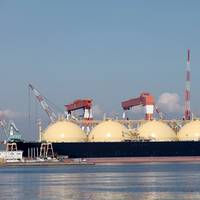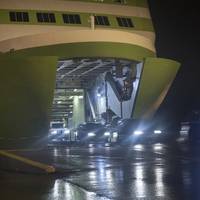LNG Trade to Grow by 11% in 2018 -Clarksons

The liquefied natural gas (LNG) trade is expected to achieve further growth of 11 percent for 2018, according to a recent report from Clarksons Research. The forecast comes on the heels 2017's 9 percent growth to 929mt. By comparison, the LNG trade averaged 0.3 percent growth from 2012 to 2015.“Global trade in LNG has moved into a strong growth phase, with a 9 percent increase in 2017 expected to be followed by further growth of 11 percent in 2018,” said Steve Gordon, Managing Director of Clarksons Research.
Cars Transported by Sea up 5% in '17

Clarksons Research on the oceangoing car carrier sector finds that 20.5 million cars were expected to be traded by sea in 2017, up by 5% year-on-year. Further Clarksons found that the overall global car carrier fleet was expected to grow slowly in full year 2017, to 781 vessels or 3.96 million car equivalent capacity. The current car carrier orderbook is at 6% of the fleet in capacity terms and $2.1 billion in contract value; 63% of capacity owned by top ten owners; and charter rates still under pressure but recently recording limited improvements. www.clarksons.com
LNG: Did the Greeks Get it Wrong?
In December 2013, Alibra’s market report front page read: “When in shipping, do as the Greeks do.” At that time, Alibra was referring to the fact that 31% of the LNG carrier orderbook had been ordered by Greek owners. Billions of dollars in CAPEX were being pumped into natural gas exploration, as well as building infrastructure such as liquefaction and export terminals, especially in the US. Some 180 LNG carriers were ordered between January 2011 to December 2014 – many of them speculatively. Of these vessels, 52 were ordered by Greek companies (29%). But the Greeks didn’t get the LNG play wrong as such – no one could ever have anticipated the shock drop in oil prices seen in mid-2014…
ABS Reports ‘Stellar Growth’ in 2014

Classification society American Bureau of Shipping (ABS) hosted its Annual Meeting in New York on April 28, 2015. “2014 was a year of firsts and excellence in performance for ABS,” said Christopher J. Wiernicki, ABS chairman, president and CEO. In 2014, the ABS-classed fleet grew by more than 7 percent year-on-year to 221 million gross tons (gt). ABS captured more than 31 percent of the liquefied natural gas (LNG) carrier orderbook and 23 percent of the very large LPG carriers on order. Crude tankers continued to represent the largest amount of tonnage within the ABS-classed fleet.
BG’s LNG Carrier Series Complete
The ABS-classed Methane Mickie Harper, a 170,000 m3 liquefied natural gas (LNG) carrier for BG Group built at Samsung Heavy Industries, Co. Ltd., was recently named in a ceremony at the Korean shipyard. This completion marked the fourth and final carrier in the series. All four in this series are dual-fuel diesel electric (DFDE) propelled and use the membrane GTT Mark III cargo containment system. The first vessel in the series, the Methane Julia Louise was delivered in early 2010. The Methane Becki Anne, the Methane Patricia Camila and the Methane Mickie Harper subsequently followed and were delivered late last year. To date, ABS has classed a total of 11 carriers for BG Group. At the end of 2010, ABS had 32 percent share of the world's gas carrier orderbook.
LPG Fleet Rates Rise
The world LPG carrier fleet is forecast to expand from 14.5 million cu. beginning of 2005 to 24.6 million cu. m. by 2015. World seaborne LPG trade (including ammonia and petchems) is forecast to increase from 73 mt to 132 mt over the same period. These are some of the findings in the new detailed report – entitled ‘LPG Carriers: Market Prospects to 2015’ – which analyses the current and historical developments within the LPG carrier sector and examines the prospects for trade and fleet development under alternative scenarios, presenting detailed forecasts for trade volumes, fleet requirements and freight rates through to 2015. • The world LPG fleet was estimated at 14.5m cu.





